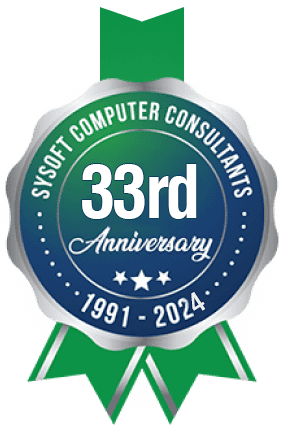10 Signs Your IT Network Has Been Hacked: Critical Warnings to Heed Immediately In [...]
I’m ready to migrate to Microsoft Azure and need help moving my data to the cloud. What do I need to do for the implementation of Microsoft Azure, and are there companies that can help with just the setup?

I’ve noticed for the last few weeks that our data servers seemed like they were more sluggish. I’m also getting comments from team leads that programs are slower to start, data takes longer to load, processes are lagging, and everything is just slow in general. I know what it means, but I’m dreading the unavoidable result.
Our servers are about three years old, and storage is over 70% capacity. The time is coming. I’ve already upgraded the RAM twice to try to prolong the life of the servers just a bit, with some success – albeit, short-lived. I added a hard drive about a year ago since the servers were still in prime condition but we just needed to increase our storage capacity to account for a healthy growth spurt and accommodate more data. We were confident our performance issues at the time were related to storage space, and it was a straightforward solution.
Once inside the third year, I began to prep the executive team to expect the need to upgrade in the next year and to allocate the funds in the department budget. Since we were adding storage space, questions came up if this would be necessary so soon, but my hope was that the budget wasn’t going to be for a new server – but for a migration to the cloud.
As we approach that ominous three-year mark for servers, I feel like the interaction more resembles an argument than a conversation, with these servers digging their rhetorical heels firmly into the ground and refusing to be coaxed into further progress. Rather than continue to battle and spend precious productivity time on prolonging the inevitable, I began to organize my research into a purchase order request.
The Big Push for Microsoft Azure
The big question for decades among IT managers was whether to replace or upgrade when it came to servers. But something has changed in the last few years. More companies of all sizes – not just global conglomerates – have made the move to the cloud. The consensus among decision-makers is knowing when the risks outweigh the benefits of giving servers a “tune-up” by way of hardware upgrades, like additional hard drives for storage space. Now the questions focus more on risk versus return for migrating to the cloud compared to maintaining in-house servers.
I already know what I want to do – I’m ready. It’s time to make the move, and we are migrating to Microsoft Azure. Our line-up will include:
- Azure SQL Database
- Cloud storage
- Virtual machines
Each of these even offers limited-capacity options at no cost for a year, though my needs exceed that limitation. For example, our database is over 250GB, and we need more than 5GB of file storage.
We only chose a few of the multitude of the options available, but the challenge I face is the actual migration – I’m in over my head. Rather than try to stumble my way through an unfamiliar process, and spend more time than I have (or want) to spend on a migration plan that may not include every step I need to cover, I reached out to Sysoft in Ontario.
Our Tailored Migration Plan
Sysoft is a full-scale managed IT services provider, but I really just needed Microsoft Azure migration consulting and assistance with the implementation process. Their team was extremely knowledgeable and thorough, working with me to establish a timeline that matched what I needed and made sure I was able to fully utilize each of my Microsoft Azure components, and also made a few suggestions to recommend I take advantage of:
- Azure Security Center
- Advanced Threat Protection
- Virtual Network
Microsoft Azure has numerous products and services that I was aware of – and many that I was just introduced to by the Sysoft team. Cybersecurity is a critical element for any organization, and with a major migration to the cloud of many of our processes, added layers of security are wise to protect against cybercriminal threats.
Our consulting fee was reasonable for one-time consulting and implementation assistance and was tailored to what I requested – rather than a set one-size-fits-all cost. We were able to define the scope of the migration within two weeks, and execute the migration quickly and not deviate from the planned process, which helped tremendously as I was concerned about downtime and productivity impact – time is money!
I was able to outline functional requirements with the Sysoft team and discuss the migration strategy and schedule – the level of communication and transparency was refreshing.
What I learned
My recommendations based on my experience:
- Outline functional requirements in advance, if possible, so your needs are clear and your process is smooth
- Detail the ideal migration schedule so that the migration strategy and timeline are as close as it can be to your exact situation
- Discuss a weekly – or even better, daily – agenda so your experience has the same levels of communication and transparency and with positive results
Most importantly, ask questions. I was impressed at how much I was able to learn during this process, and am confident our company is poised for growth for the next decade!
If you enjoyed this article, here are a few more that might interest you:
- How To Migrate To Microsoft Office 365
- The Ultimate Checklist For Choosing A Cloud Service Provider
- What’s Your Cybersecurity ROI?




